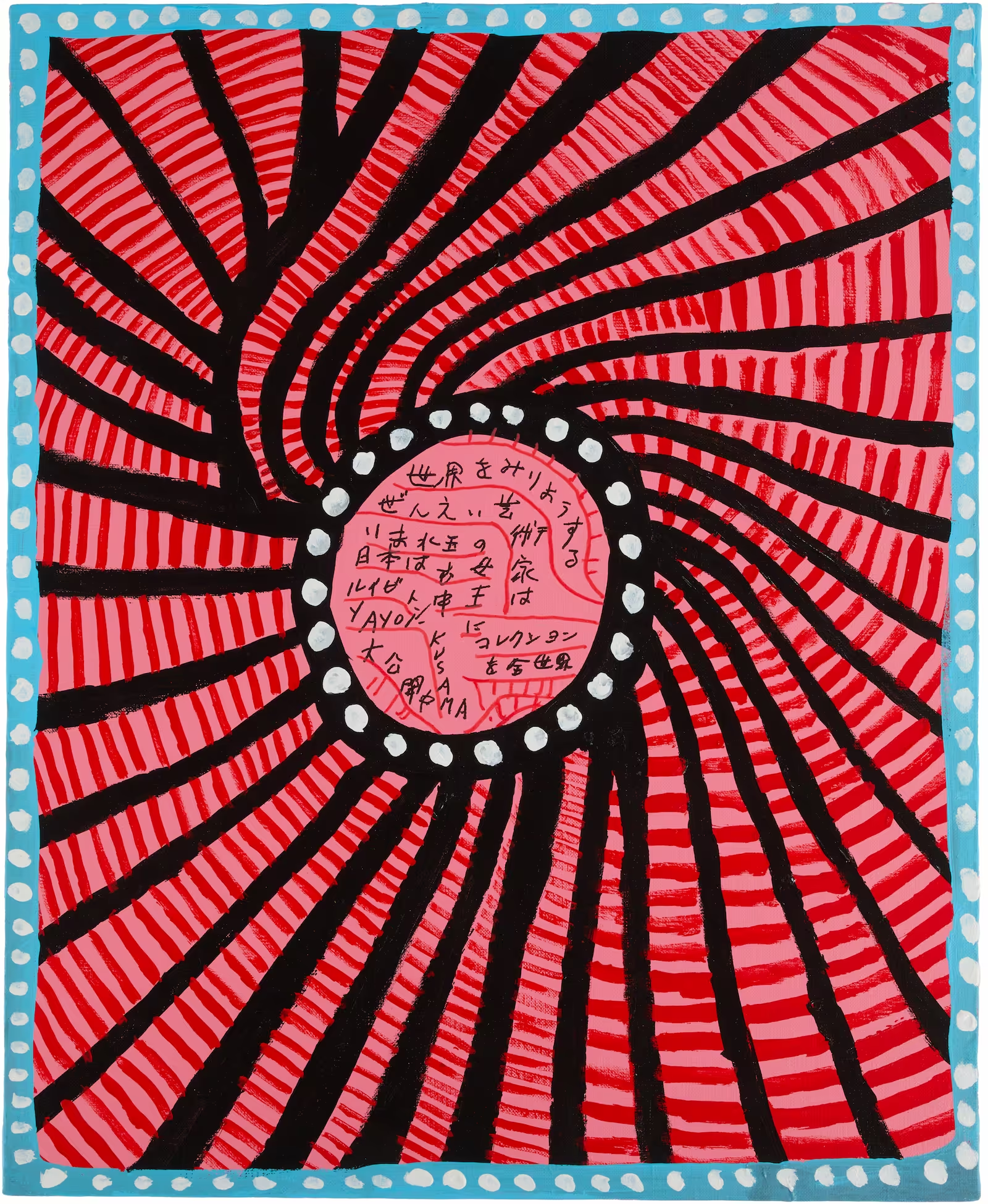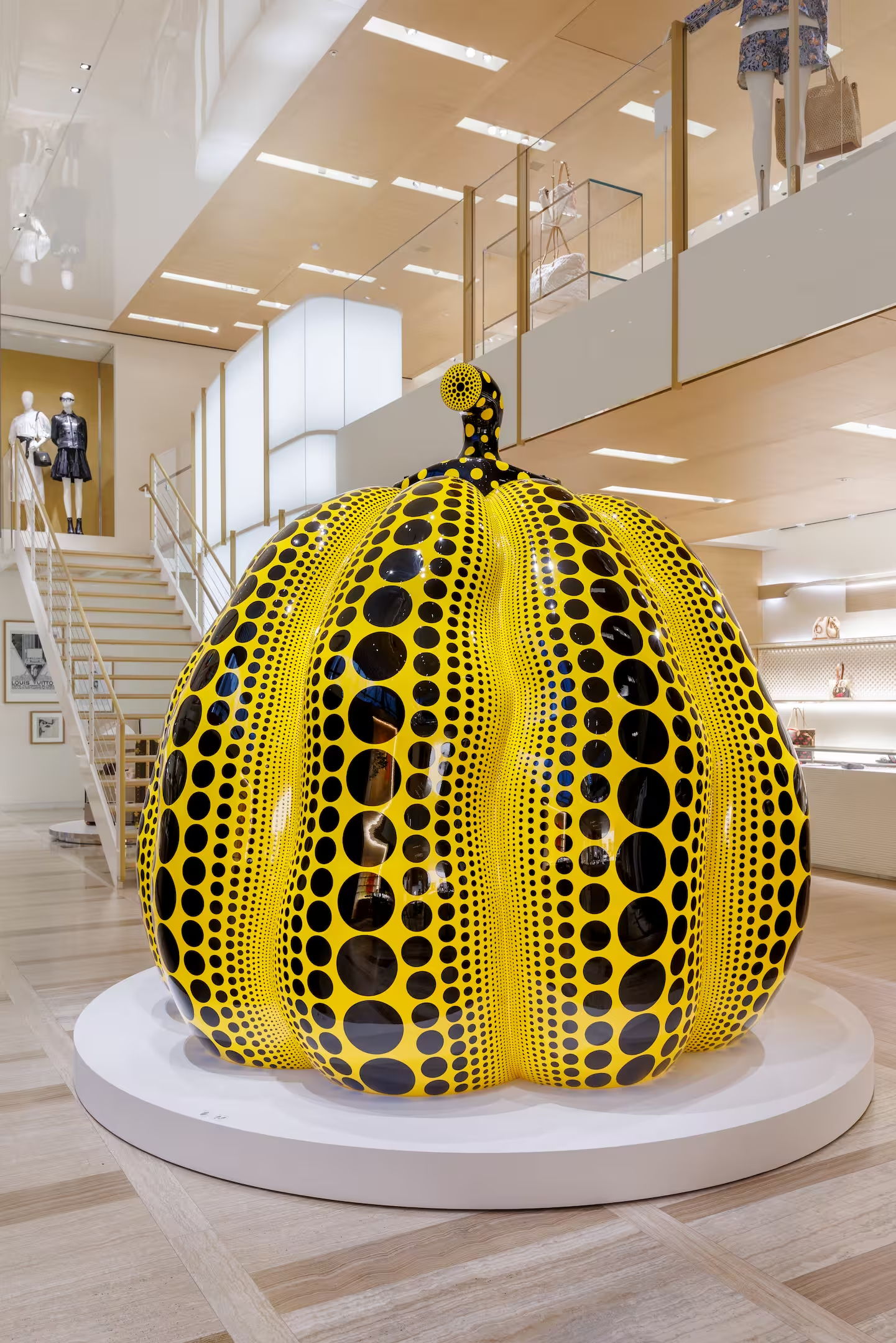CURRENT EXHIBITION
YAYOI KUSAMA
INFINITY
SELECTED WORKS FROM THE COLLECTION
JULY 16TH, 2025JANUARY 12TH, 2026
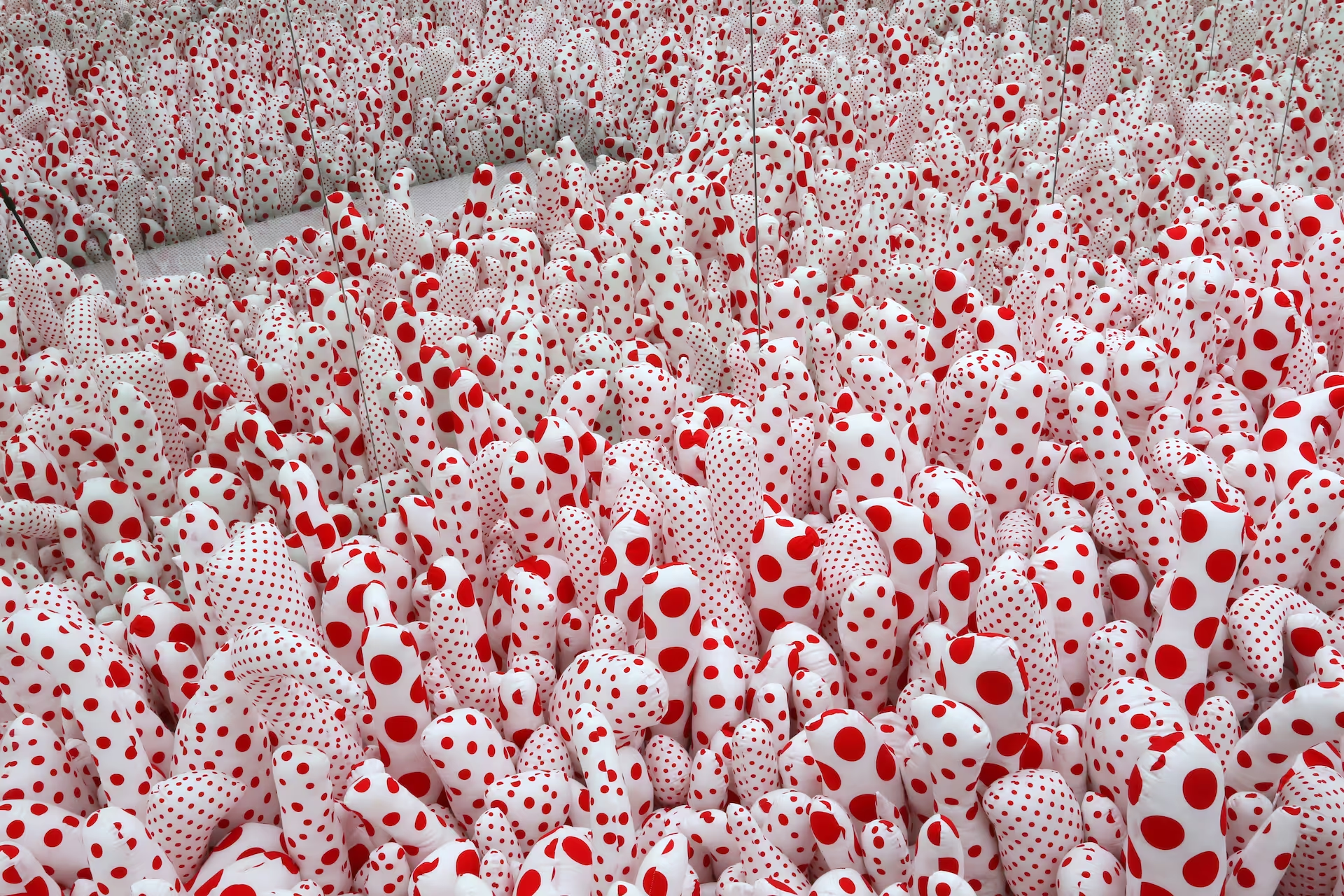
Yayoi Kusama, Infinity Mirror Room-Phalli’s Field (or Floor Show) 1965/2013.
Courtesy of the artist and Fondation Louis Vuitton, Paris
© YAYOI KUSAMA. Courtesy of Ota Fine Arts
In parallel with World Expo Osaka Kansai 2025, the Espace Louis Vuitton Osaka is proud to present YAYOI KUSAMA: INFINITY – Selected Works from the Collection, a brand new exhibition bringing together works by the iconic Japanese artist Yayoi Kusama, from her emergence on the global art scene through to her current work. The chronological arc of this exhibition provides insight not only into the breadth and variety of her work, but also the unifying threads that have guided her practice from the New York of the early 1960s to the present day. This presentation lives within the framework of the “Hors-les-murs” programme of the Fondation Louis Vuitton, showcasing holdings of the Collection at the Espaces Louis Vuitton in Tokyo, Munich, Venice, Beijing, Seoul and Osaka, thus following the Fondation Louis Vuitton’s mission to mount international projects and reach a broader global audience.
Yayoi Kusama is a prolific artist whose work is remarkable for its shape-shifting identity and compulsive proliferation. At every stage of her career she has displayed an extraordinary level of creative energy as a painter, sculptor, performance artist, novelist and fashion designer. The pieces presented in this exhibition facilitate exploration of the relationship between her creative journey and certain major currents in the history of Japanese and American art, against and with which Kusama has built her practice. Although her artistic career has interacted with, and inspired, both pop art and minimalism, her essential strength lies in the impressive independence that her highly personal pieces reflect and retain, right up to the most recent pieces shown in this exhibition.
Born in 1929 in Matsumoto in Japan’s Nagano prefecture, and based in Tokyo since 1973, Yayoi Kusama grew up surrounded by plants in a family who owned a plant nursery and seed farm. She was around 10 years old and already drawing and painting when she experienced her first hallucinations. These included envisioning the interior of her family home covered in flower motifs that eventually engulfed her. These childhood memories form the basis of her mythology and its accompanying psychic turmoil, both of which have driven her art ever since. In a process she describes as “self-therapy", she compulsively repeats motifs that have become powerful signatures and are clear to see in the pieces curated in this exhibition. The Infinity Nets and Dots of the 1960s have developed in more recent pieces to become floating forms suggesting stars, cells and total abstraction. Throughout her career, she has used this technique to give form to her fears and obsessions.
These motifs give shape to Kusama's essential philosophy. At the heart of the exhibition, the first of her many Infinity Mirror Rooms, Infinity Mirror Room - Phalli's Field (or Floor Show) (1965/2013), welcomes visitors to become disorientated as they immerse themselves in a world of endlessly repeated polka dots. In this iconic environment, as in the poetry that accompanies Every Day I Pray for Love (2023) and in her repetitive painting practice, the artist reveals both her hallucinatory visions and her philosophy on the place we occupy as individuals within the universe. Through the broad diversity of techniques she uses in her Dots and Infinity Nets, Kusama beckons the viewer to think about infinity and allow themselves to be absorbed by the visual experience in a process she calls “self-obliteration”. She effectively invites us to step back and become one with the environment that envelops us all.
About the Fondation Louis Vuitton
The Fondation Louis Vuitton serves the public interest and is exclusively dedicated to contemporary art and artists, as well as 20th-century works to which their inspirations can be traced. The Collection and the exhibitions it organizes seek to engage a broad public. The magnificent building created by the Canadian-American architect Frank Gehry, and already recognized as an emblematic example of the 21st-century architecture, constitutes the Fondation's seminal artistic statement. Since its opening in October 2014, the Fondation has welcomed more than ten million visitors from France and around the world.
The Fondation Louis Vuitton commits to engage in international initiatives, both at the Fondation and in partnership with public and private institutions, including other foundations and museums such as the Pushkin Museum in Moscow and the Hermitage Museum in Saint Petersburg (Icons of Modern Art. The Shchukin Collection in 2016 and The Morozov Collection in 2021), the MoMA in New York (Being Modern: MoMA in Paris), and the Courtauld Institute of Art in London (The Courtauld Collection. A Vision for Impressionism) among others. The artistic direction also developed a specific "Hors-les-murs" programme taking place within the Espaces Louis Vuitton in Tokyo, Munich, Venice, Beijing, Seoul and Osaka, which are exclusively devoted to exhibitions of works from the Collection. These exhibitions are open to the public free of charge and promoted through specific cultural communication.
ARTIST

PORTRAIT OF YAYOI KUSAMA
Photo by Yusuke Miyazaki
Courtesy of Ota Fine Arts and David Zwirner.
© YAYOI KUSAMA
Yayoi Kusama
Yayoi Kusama was born in 1929 in Matsumoto in Nagano prefecture, Japan. She lives and works in Tokyo, Japan.
Even as a child, Kusama drew and wrote, winning prizes for both. Despite the disapproval of her family, she studied arts, learning the style of Japanese painting known as nihonga and began making her own media, from paper to wood, cardboard and fabric. In 1957, having considered moving to France and following an exchange of letters with the American artist Georgia O'Keeffe, she left Japan for the USA.
Having first arrived in Seattle, she was to settle ultimately in New York, where she attended the Art Students League. It wasn't long before she made contact with some of the key figures of the American avant-garde; Andy Warhol's Factory was very close to her studio in the same building as Claes Oldenburg’s. Both borrowed directly from her: for Warhol, it was screen printing wallpaper, while for Oldenburg it was the concept of soft sculpture.
But in both cases, they did so without her knowledge. Despite being at the heart of New York’s vibrant art scene and receiving considerable media coverage, Kusama - being not only a woman in the art world, but also a foreigner - struggled to make a living from her art. In 1973, she went home to Japan for surgery at a hospital in Tokyo, and setteled there. Plagued by violent hallucinations, she asked to be admitted to a Tokyo psychiatric hospital in 1977, where she still works on her art.
Working through disciplines as diverse as painting, sculpture, installation, literature, performance and fashion, Kusama applies her iconic polka dots, net and flower motifs developed out of an automatic and meditative technique she practises continually.
Produced soon after her arrival in the USA, her first abstract Infinity Nets canvases quickly grew to monumental proportions, until the motifs invaded her studio walls and galleries, as well as her clothes and the furniture and domestic objects she found on the street, which she decorated with proliferating textile protuberances in her Accumulation series, which in many ways heralded the emergence of work by other artists, including Eva Hesse, soon after.
In a wider context of protest against patriarchal society, capitalism and the Vietnam War, her art became politicised in the happenings and performances she orchestrated in the second half of the 1960s. On her return to Japan, Kusama initially set out to question this other society, which she saw as patriarchal and conservative. But ultimately, she continued with the process of developing her philosophy in the form of polka dots and infinite repetitions.
Kusama presented her first solo exhibition in her home country in 1952. Following many exhibitions in Japan and USA, and an uninvited exhibition at the 33rd Venice Biennale in 1966, the importance of her international reputation was finally recognized with an official invitation to represent Japan at this illustrious international event in 1993.
Since then, her work has been the subject of many exhibitions around the world, including at MoMA in New York in 1998 the Museum of Contemporary Art Tokyo in 1999 the Centre Pompidou in Paris (France) and Tate Modern in London (United Kingdom) in 2011 and 2012, and more recently the Gropius Bau in Berlin (Germany) in 2021, M+ in Hong Kong in 2022 and the National Gallery of Victoria in Melbourne (Australia) in 2024.
Dedicated to the artist and her work, the Yayoi Kusama Museum opened in Tokyo in 2017, and has offered visitors an intimate experience around encountering her pieces through a series of richly diverse exhibitions.
ARTWORKS
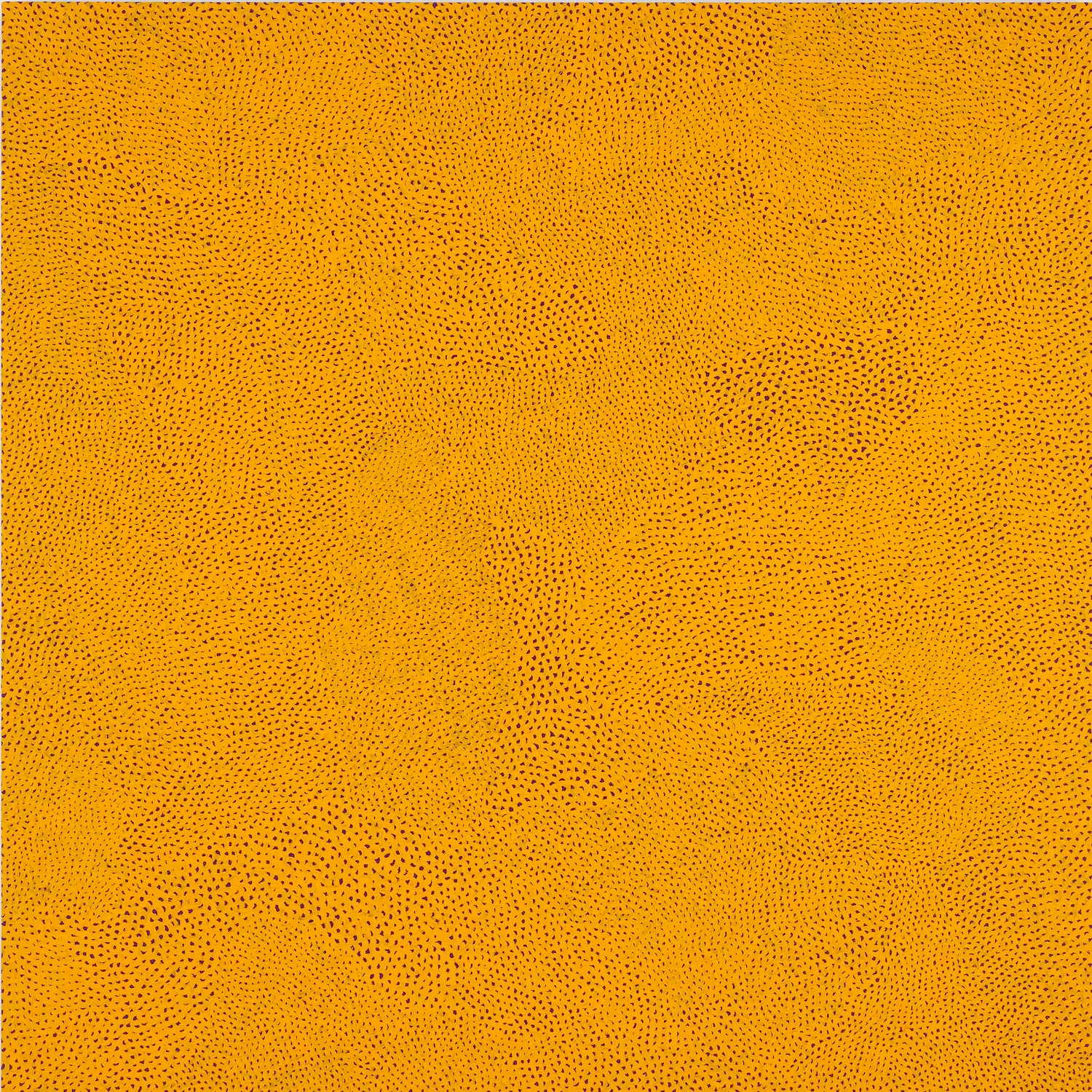
INFINITY NETS DHPP
2010
Acrylic on canvas
194 x 194 cm
Courtesy of the artist and Fondation Louis Vuitton, Paris
© YAYOI KUSAMA. Courtesy of Ota Fine Arts.
Photo credits: © Primae / Louis Bourjac
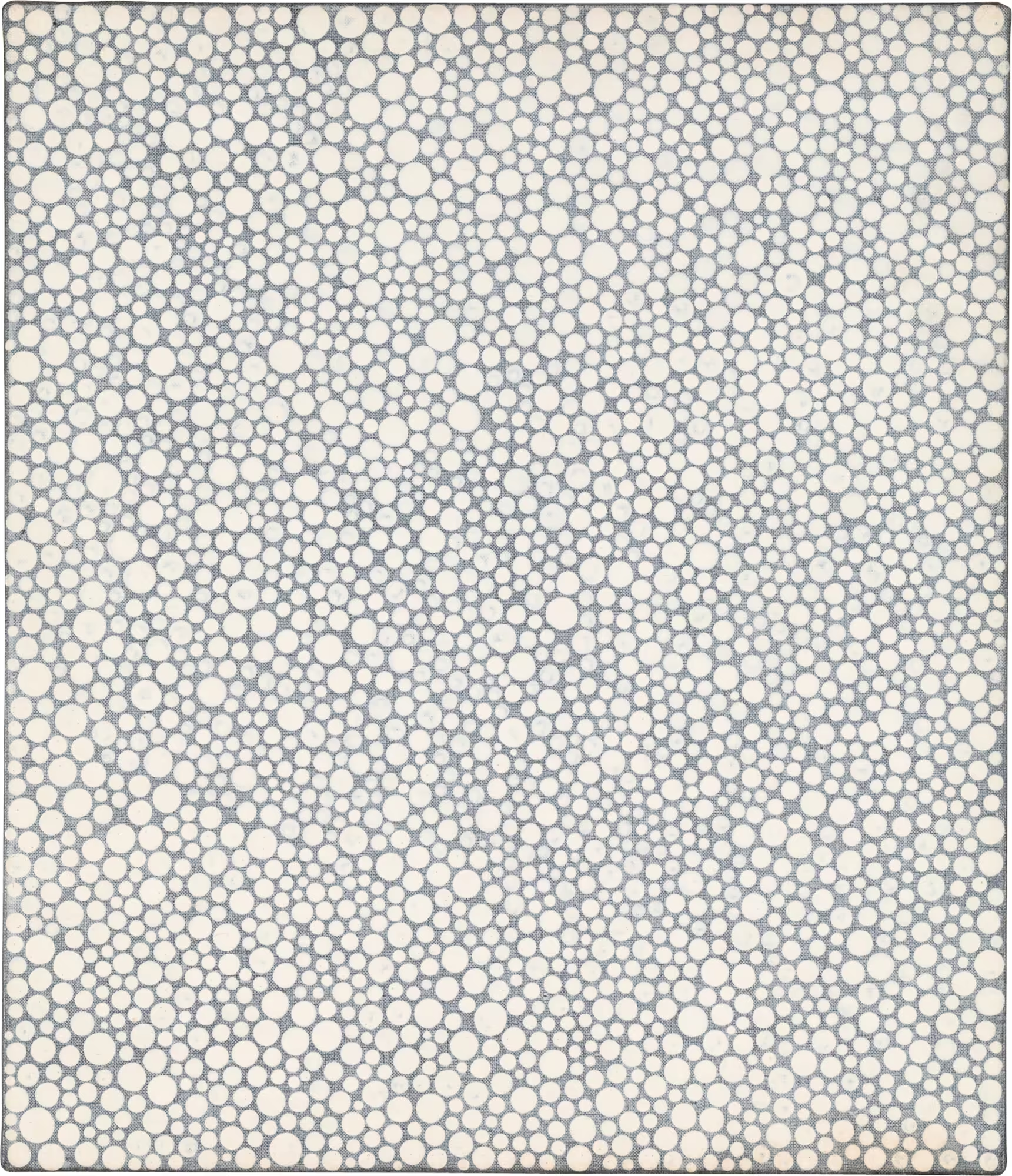
DOTS
1990
Acrylic on canvas
52.7 x 45.7 cm
Courtesy of the artist and Fondation Louis Vuitton, Paris
© YAYOI KUSAMA
Photo credits: © Primae / Louis Bourjac
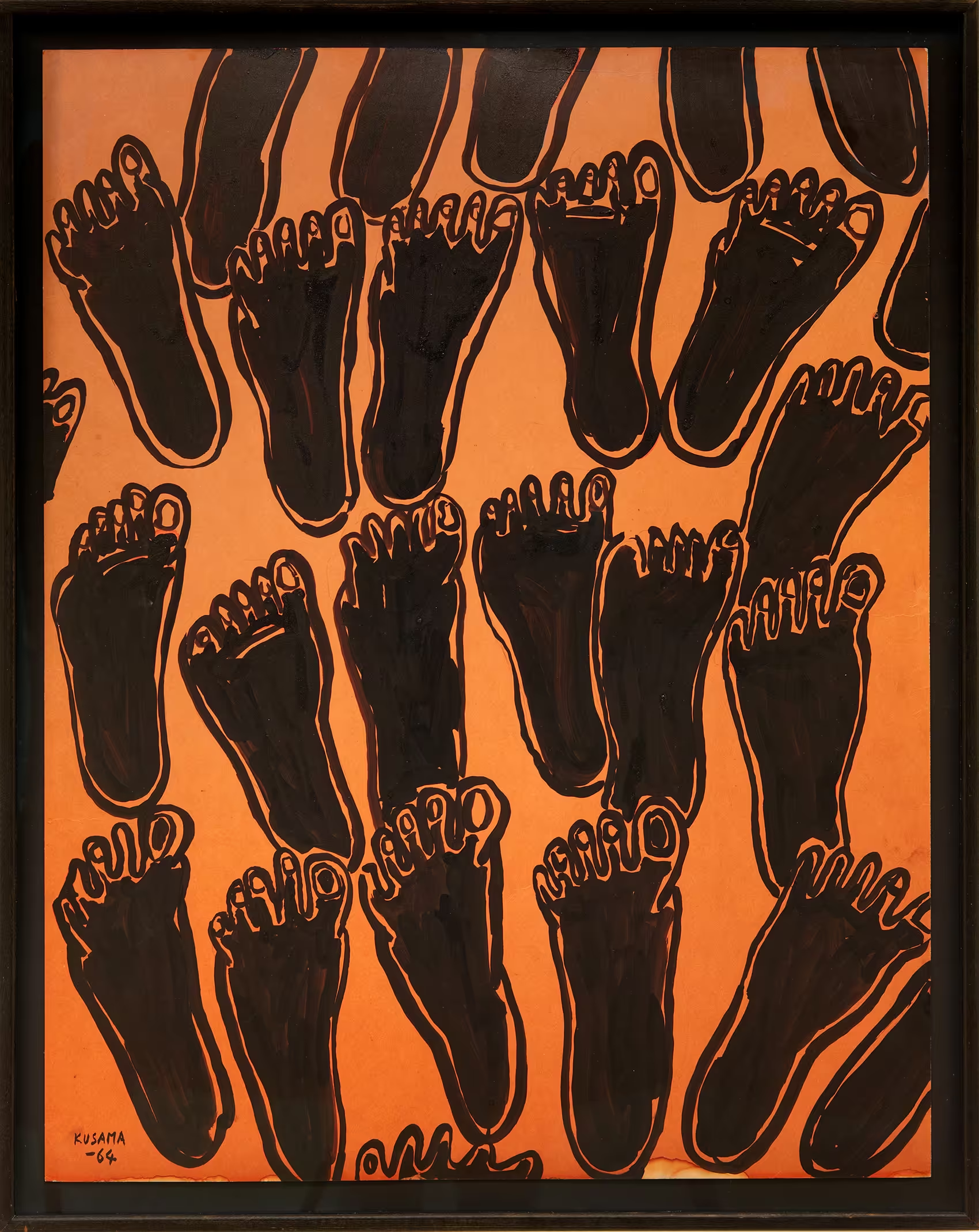
UNTITLED (FEET)
2022
Ink and graphite on paper
71.1 x 55.8 cm
© YAYOI KUSAMA
Photo credits: Louis Vuitton Malletier – Stéphane Muratet
Louis Vuitton Collection 2008

